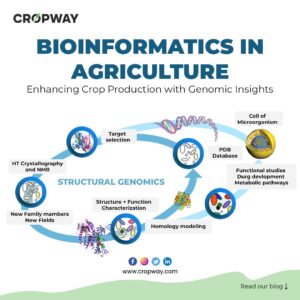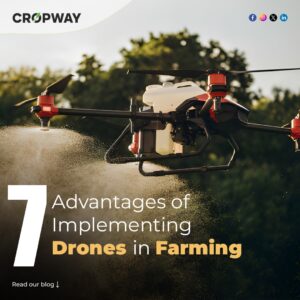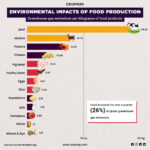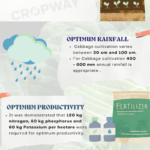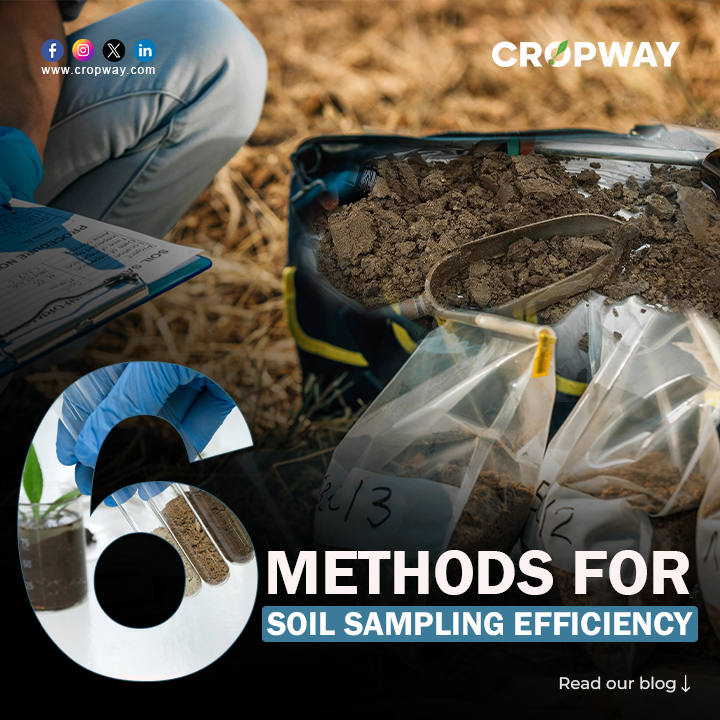
Soil sampling lies at the core of modern agricultural practices, serving as the bedrock for ensuring fertile and productive farmlands. It’s not merely a routine task; it’s the key to unlocking the full potential of crop yield while preserving our land for future generations. The significance of this practice cannot be overstated—it’s the linchpin for optimizing crop productivity, understanding nutrient levels, and implementing sustainable farming techniques.
To attain these critical agricultural objectives, the selection of efficient soil sampling methods is not just important; it’s the cornerstone of success. Each method brings its unique advantages, offering farmers insights into their soil’s health, aiding in informed decisions about fertilization, irrigation, and overall land management strategies.
How to Select Sampling Sites:
Choosing the right sampling approach hinges on several considerations. Key among these is the availability of historical field data, encompassing details like past management practices (such as tillage techniques, chemical applications, and crop history) and previous yields. Additionally, the cost involved and the desired level of intricacy in the analysis will impact the selection of the sampling method. When historical data is accessible, directed sampling emerges as a cost-effective choice. However, in cases where records are absent or the field lacks a cultivation history, employing one of the two grid sampling methods becomes crucial. These methods significantly enhance precision, aiding growers in the precise application of nutrients using advanced equipment.
Methods for soil sampling:
In this comprehensive exploration, we embark on a detailed journey through the top six methods specifically tailored to maximize soil sampling efficiency. From traditional techniques to the latest technological advancements, we’ll dissect these methods, uncover their strengths, and highlight their applicability in today’s dynamic farming landscape. So, let’s dig deeper into these methodologies and unearth the secrets to optimizing soil sampling practices for a sustainable and thriving agricultural future.
1. Grid Sampling:

Grid sampling is a meticulous technique that segments a field into smaller, equally-sized grids or sections. Each grid intersection becomes a sampling point, capturing soil samples from various locations across the field. This systematic approach provides an encompassing view of soil variability within the entire area. By analyzing samples from these specific points, grid sampling allows for a detailed understanding of nutrient distribution throughout the field. This precise insight empowers farmers to tailor fertilizer applications strategically, targeting areas with specific nutrient needs. Ultimately, grid sampling optimizes resource allocation and enhances the efficiency of fertilizer use, contributing to improved crop health and yields.
2. Zone Sampling:

Zone sampling is a departure from the uniformity of traditional soil sampling methods. Instead of treating the entire field uniformly, this method pinpoints distinct zones that exhibit similar soil attributes. By delineating these zones, it unveils the nuanced variations in soil properties across the field. This approach facilitates a deeper understanding of the diverse soil characteristics present in different areas. Consequently, farmers can craft targeted and customized management strategies, recognizing that different sections of the field may demand distinct treatments based on their individual soil conditions. This precision-driven approach optimizes resource allocation and empowers farmers to apply tailored solutions for enhanced crop performance.
3. Depth-Specific Sampling:

Depth-specific sampling ventures beneath the surface to explore the diverse soil properties that fluctuate across varying depths. Soil characteristics aren’t uniform throughout the soil profile; they evolve and transform at different layers beneath the surface. By sampling at different depths, farmers gain a comprehensive insight into nutrient distribution, soil constraints, and moisture retention capabilities across these distinct soil layers. This method unveils critical information, empowering farmers to craft nuanced recommendations for soil amendments and effective management practices. Understanding the specific needs of each soil layer enables more precise and targeted actions, ensuring optimal crop growth and sustainable land use practices.
4. Composite Sampling:

Composite sampling streamlines the soil sampling process by amalgamating soil samples from multiple locations within a specified area or zone. It’s a strategic approach that involves pooling samples, reducing the overall number of samples required while still providing a comprehensive representation of the soil properties within that specific area. This method simplifies the sampling process, making it more efficient without sacrificing the accuracy needed to understand the soil characteristics within the defined zone. By combining samples intelligently, farmers gain a thorough understanding of the soil’s properties without the need for exhaustive sampling, saving time and resources while ensuring the data collected remains reliable and informative.
5. GPS Technology:

Leveraging Global Positioning System (GPS) technology is a game-changer in soil sampling accuracy. It involves the use of GPS devices or smartphone applications to precisely mark sample locations within a field. This method ensures a systematic and thorough approach to sampling by accurately recording and tracking the exact spots where samples are collected. By integrating GPS technology, farmers can significantly reduce the chances of oversights and omissions, ensuring comprehensive coverage of the entire field area. This level of precision not only enhances the accuracy of soil sampling but also streamlines the entire process, enabling farmers to make informed decisions based on reliable data collected from specific locations within their fields.
6. Sampling Tools and Techniques:

Employing the right tools and techniques is pivotal in ensuring accurate soil sampling. The use of specialized tools like soil probes or augers, coupled with strict adherence to standardized sampling protocols regarding depth, location, and the number of cores per sample, significantly enhances the reliability of the collected data. It’s crucial to follow precise guidelines during the sampling process to guarantee consistency and accuracy across samples. Additionally, properly labeling and handling samples is essential to maintain the integrity of the gathered information, preventing contamination or mixing that could compromise the accuracy of the analysis. These meticulous practices contribute significantly to the credibility and trustworthiness of the soil sample data, enabling informed decision-making in agricultural practices.
The ideal time for soil sampling:
Gather soil samples right after harvest and ideally just before the upcoming planting season. Pre-planting tasks, like applying liquid chemicals, pre-irrigation, or spreading litter/manure, can alter soil conditions. Therefore, it’s essential to account for these activities when determining the sampling timing. For consistent data across multiple years, conduct sampling at the same period annually to mitigate seasonal fluctuations. While different schedules may be debated, the crucial aspect lies in maintaining consistency in the timing of sample collection.
The technique for collecting soil samples using the V-shaped method:
1. Clear away any surface materials like litter, grass, or debris at the sampling location.
2. Insert the auger to a depth of 15 centimeters and extract the soil sample.
3. Gather a minimum of 10 to 15 samples from each sampling area, placing them in a container.
4. If an auger isn’t accessible, create a ‘V’ shaped incision using a spade, reaching 15 centimeters in depth.
5. Extract a thick slice (2.5-3 cm) from the top to the bottom of the exposed ‘V’ shaped cut and transfer it to a clean container.

6. Combine the collected soil in one location, mix it thoroughly by hand, spread it out on a paper or clean plastic sheet, and divide it into four quarters. Keep two quarters and discard the opposite two, repeating this process until the soil amounts to around 500 grams.
7. Air-dry the soil in the shade.
8. Place the dried soil sample into a labeled plastic bag and submit it for analysis.
Instructions for determining the depth of sampling:
| S.No. | Crop | Soil Sampling depth (in inches) | Soil Sampling depth (in cm) |
| 1. | Grasses and grasslands | 2 | 5 |
| 2. | Rice, finger millet, groundnut, pearl millet, small millets etc.(shallow rooted crops) | 6 | 15 |
| 3. | Cotton, sugarcane, banana, tapioca, vegetables etc. (deep rooted crops) | 9 | 22 |
| 4. | Perennial crops, plantations and orchard crops | Three soil samples at 12, 24 and 36 inches | Three soil samples at 30, 60 and 90 cm |
How can Cropway help in soil sampling?
Cropway employs advanced technologies in its laboratories to conduct soil testing and analyze various intricate details that can be valuable. Additionally, it offers a soil nutrition detection module incorporating geospatial technology, providing farmers with recommendations for optimal inputs and other pertinent information to improve soil quality and enhance crop growth. Over the years, the organization has assisted hundreds of thousands of farmers by implementing cutting-edge and effective technological solutions, ensuring a smooth and efficient farming experience. The main goal has been to empower the smallholder farming community, promoting economic independence and long-term sustainability. This contributes to the development of a resilient agricultural ecosystem and supports the establishment of sustainable livelihoods.
Conclusion:
By implementing these advanced soil sampling methods, farmers gain an in-depth understanding of their soil’s condition. This knowledge empowers them to make informed decisions regarding soil health, nutrient management, and resource allocation. Ultimately, these methods pave the way for sustainable agricultural practices, optimizing yields while preserving the health and productivity of the land for future generations.
Refrence:
https://www.montana.edu/extension/pspp/documents/SoilSamplingStrategies.pdf
https://justagriculture.in/files/newsletter/2022/april/10.pdf
https://lgpress.clemson.edu/publication/precision-agriculture-based-soil-sampling-strategies/


